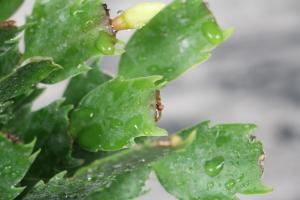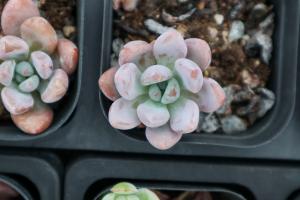Do Spotted Lanternflies Eat Tomato Plants?
The spotted lanternfly (Lycorma delicatula) is an invasive species that has become a serious problem for farmers and gardeners in many parts of the United States. This insect feeds on the sap of many different plants, and it has a particular fondness for fruit trees, grapevines, and hardwood trees. But what about tomato plants? Do spotted lanternflies eat these common garden vegetables? In this article, we'll explore what we know about the spotted lanternfly's appetite for tomatoes.
What Are Spotted Lanternflies?
Before we get into whether or not spotted lanternflies eat tomatoes, it's important to understand a bit more about these invasive insects. Spotted lanternflies are native to parts of Asia and were first discovered in the United States in Pennsylvania in 2014. Since then, they have spread to many other states, including New York, New Jersey, Maryland, Virginia, and Delaware.
These insects have distinctive black and white spotted wings and bright red underwings, making them easy to spot. Adult lanternflies grow to be about 1 inch in length, and they lay their eggs in masses on trees, fences, and other objects. When the eggs hatch, the young insects (called nymphs) are small and black with white spots. As they mature, they grow larger and more colorful.
What Do Spotted Lanternflies Eat?
The short answer is: a lot of things. Spotted lanternflies feed on the sap of many different plants, including fruit trees (like apples and peaches), grapevines, hardwood trees (like oak and maple), and many others. They have a long, needle-like proboscis that they use to pierce the bark of plants and suck out the sap.
But what about tomatoes? According to the Pennsylvania Department of Agriculture, spotted lanternflies have been observed feeding on tomato plants, but they do not appear to favor them over other plants. This means that if you have a garden with a variety of plants, your tomatoes may be at risk of being eaten by spotted lanternflies.
How Do Spotted Lanternflies Affect Tomato Plants?
If spotted lanternflies do feed on your tomato plants, what kind of damage can you expect? Unfortunately, the answer is not entirely clear. Tomato plants that are attacked by spotted lanternflies may experience stunted growth, yellowing leaves, and reduced fruit production. The insects may also leave behind a sticky residue called honeydew, which can attract other pests like ants and wasps.
However, not all tomato plants will be equally affected by spotted lanternflies. Some may be more resilient than others, depending on factors like soil quality, watering habits, and overall health. Additionally, the severity of the infestation can vary widely from garden to garden, so it's difficult to predict exactly how much damage spotted lanternflies will cause.
How to Protect Your Tomato Plants from Spotted Lanternflies
If you're concerned about spotted lanternflies eating your tomatoes (or any other plants in your garden), there are a few steps you can take to protect them:
Remove any egg masses you find on trees, fences, or other surfaces near your garden. Lanternfly eggs look like brownish-gray splotches and can hold up to 50 eggs each.
Cover your plants with insect netting or other physical barriers to prevent spotted lanternflies from landing on them.
Use insecticidal soap or other approved insecticides to kill spotted lanternflies. Be sure to follow the instructions carefully and use only as directed.
Encourage natural predators like birds and praying mantises to patrol your garden and eat any spotted lanternflies they find.
By taking these steps, you can reduce the risk of spotted lanternflies harming your tomato plants (as well as other plants in your garden). However, it's important to note that there is no foolproof way to completely eliminate these invasive insects from your area. Vigilance and persistence are key to keeping your garden healthy and productive.
Conclusion
So, do spotted lanternflies eat tomato plants? Yes, they do, but not exclusively. These insects will feed on a wide range of plants, including tomatoes, if given the chance. If you're concerned about spotted lanternflies in your garden, be sure to take steps to protect your plants and reduce the risk of damage. With some effort and diligence, you can keep your garden healthy and productive, even in the face of invasive species like the spotted lanternfly.

 how many times do yo...
how many times do yo... how many planted tre...
how many planted tre... how many pine trees ...
how many pine trees ... how many pecan trees...
how many pecan trees... how many plants comp...
how many plants comp... how many plants can ...
how many plants can ... how many plants and ...
how many plants and ... how many pepper plan...
how many pepper plan...
































